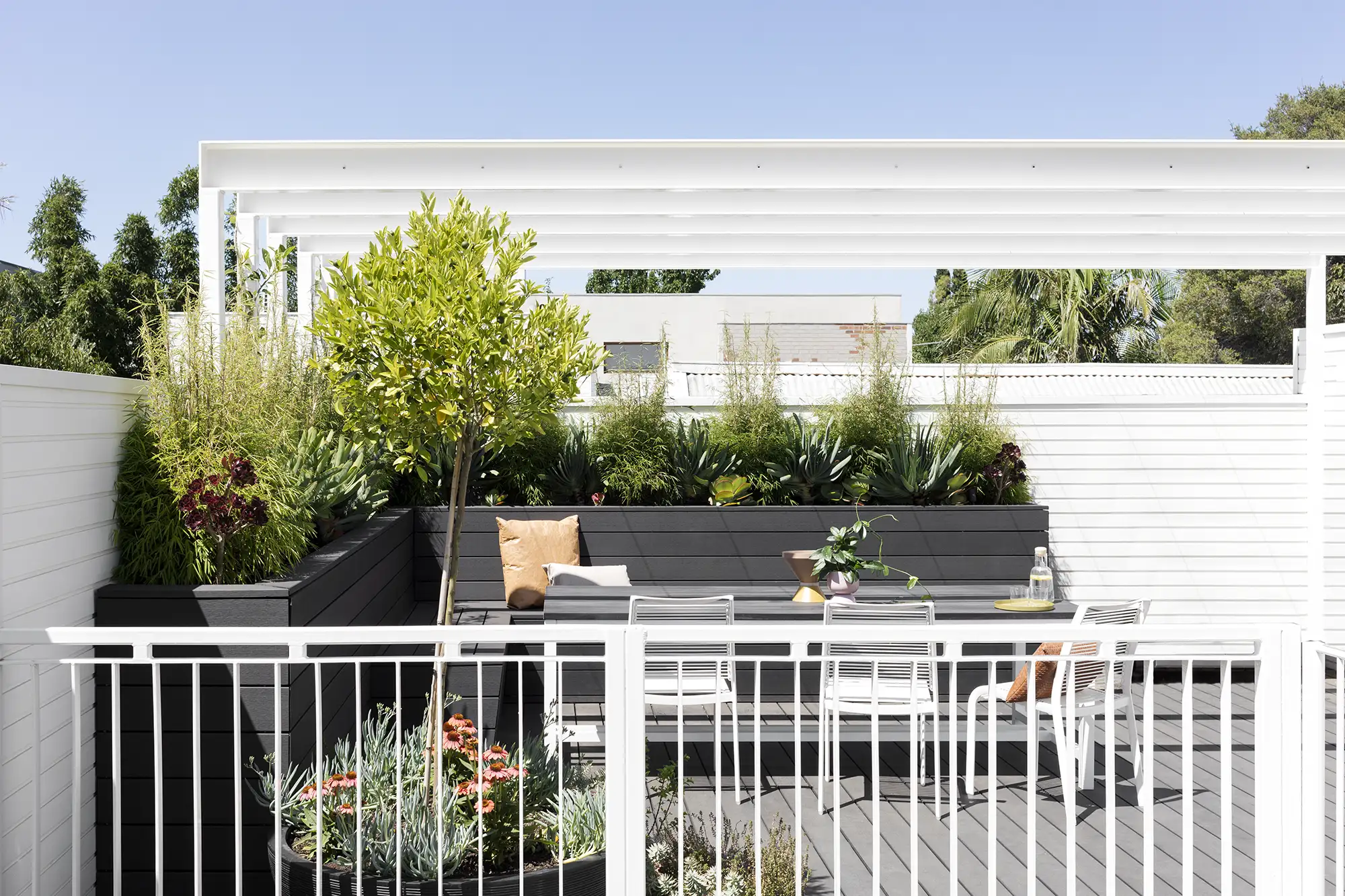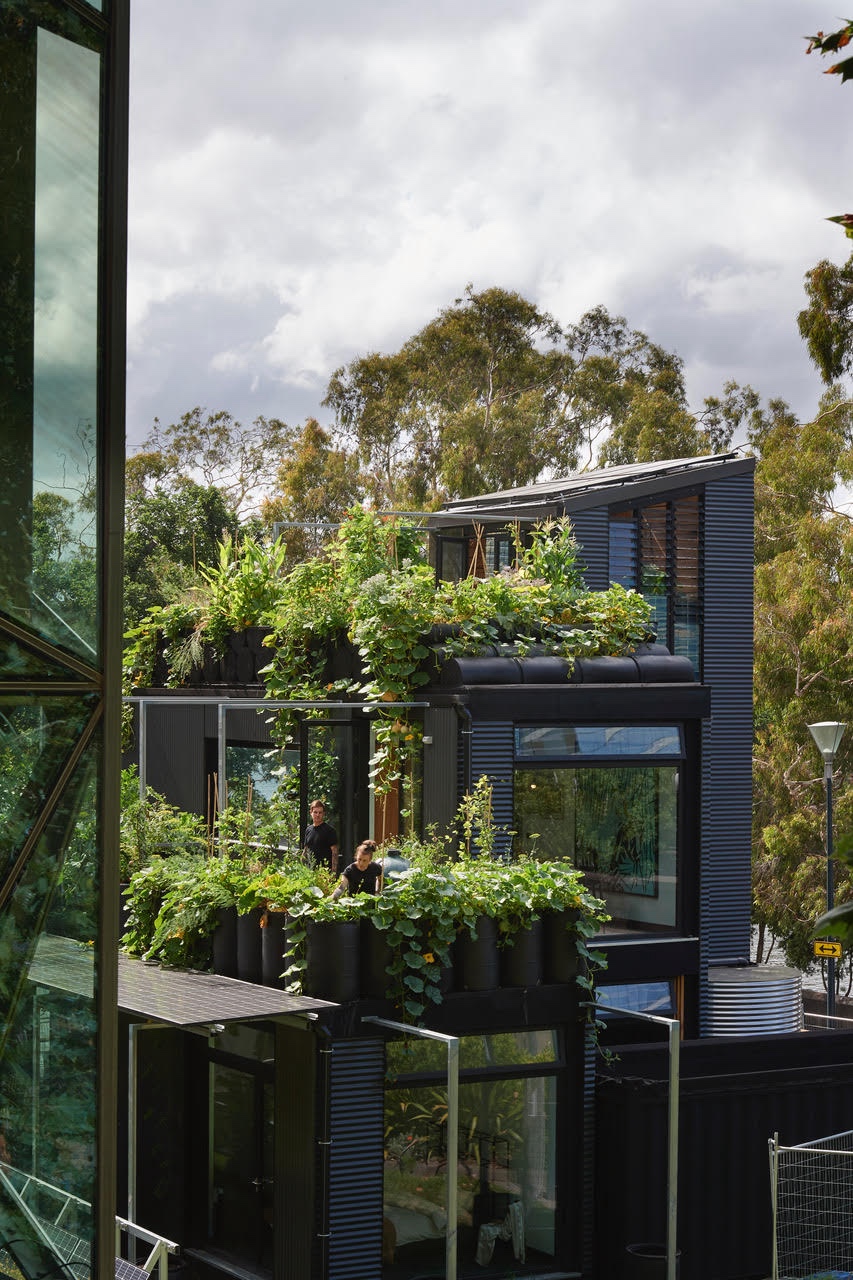

If the name Joost Bakker sounds familiar, it’s likely because of the impressive Future Food System – a self-sustaining, zero-waste house, restaurant and school that Joost has constructed in Federation Square. The idea behind this innovative and experimental project is to demonstrate the potential of our homes to provide shelter, produce food and generate energy.
Fortem Projects director Chris Curtain was recently invited to have dinner at Future Food System to learn more about zero-waste living and building more sustainably from Joost himself. This was an opportunity for Chris to see how recycled materials and clever design techniques can be used to completely transform the way we live – without disrupting our quality of life.
Inspired by this dining experience, we wanted to hear more from Joost about building with a zero-waste, recycling mindset and how Melburnians can live a little more sustainably each day.
Keep reading to hear what he had to say in this very special Building Insider article.
Joost Bakker: My approach to building follows a very simple formula – and that is if a material can’t be biodegraded or recycled, I don’t use it. I almost like to think of it as putting together a cake that’s completely organic – and FutureFoodSystem was no different.
The great thing is that most building materials can actually be recycled – some more easily than others – which means people can incorporate a number of these features into their own homes. One of my favourite examples is heat pumps – a heat pump uses 75 per cent less energy than a conventional hot water unit, but only about 10 per cent of houses have currently have these. If we all made the change to heat pump technology, it would massively reduce our energy consumption.
Once of the reasons why FutureFoodSystem has been such a successful concept is the lessons it’s taught us about excess energy. Even when it’s raining in Melbourne – like today – there will be an abundance of excess power in the middle of the day, and this is just scratching the surface.
We are in the midst of a revolution from an energy perspective and if more people embrace sustainable energy production like those at FutureFoodSystem, we’ll have excess energy that can be used for a multitude of applications – from powering cars, to growing plants and harvesting water.
Joost Bakker: There are some great innovative materials out there, but often ubiquitous building materials are sustainable too. Take something like plasterboard, for example, which is fully recyclable – offcuts or plasterboard from demolition sites can be crushed and turned into a really high-quality fertiliser for your plants.
I also love using materials like concrete – because its’s circular and very easy to recycle – and steel as it’s easy to recover, as well as being light and accurate. My building skeletons are always made from steel as new technologies have made it incredibly accurate and therefore, zero waste. Then, at the end of a building’s life you’ve got a really valuable material that can be recovered.
In terms of materials I avoid, I never use PVC in my buildings as it’s highly toxic and can’t be recycled in Australia. There is a company in Germany that does recycle this material, but we can’t just ship our waste to Germany – it’s always important to understand what you can (and can’t) do with the materials you have.
At the end of the day, it’s really about choosing materials that are non-toxic and can be easily recyclable. Things that are bound together by glues or plastic should always be avoided.
Joost Bakker: There are literally hundreds of studies that show the air we breathe directly impacts our wellbeing. It’s becoming more common to consider your gut flora and microbiome health at the moment, with some people even saying this is the body’s second “brain”. We also know that the air we breathe impacts our gut flora within seconds. So, with that knowledge we should be really critical about what we put in our homes.
We spend so much time indoors so it’s really important to make sure the air we breathe there is safe. There are so many popular materials out there that will release toxic gasses throughout their life span – many of which include endocrine disrupters which can have really harmful impacts – and it’s really concerning when you think about that.
My advice is always simple – choose carefully and be very conscious about the materials you’re bringing into your home. It’s also much easier to do this now than it was 10 years ago. There’s no reason for us to be using toxic materials anymore – we can replace them with some of the many alternatives on the market.
Joost Bakker: When you design zero waste, you need to start at the end and work your way back to the beginning. That’s how you can design all of the waste and problematic materials out, before it’s too late.
Make sure you time the time to do your research about materials. For example, plasterboard is fully recyclable, but if it’s being covered in glue on installation, it becomes toxic and can’t be recycled at the end of its life. Not to mention, the glue is a toxic contaminant in your home.
Sometimes zero-waste is about going back to the basics and doing things a bit more “old school”. It might mean taking the time to screw things like plasterboard in, instead of just using glue because it’s easier and faster. It might be more labour upfront, but it’s a decision that will make your home more sustainable and recyclable at the end of its life.
Joost Bakker: Places like the Netherlands are leading the world with changing to sustainable systems, because they’re the ones that actually felt the impact first. Holland for example experienced things like acid rain and a huge a loss of biodiversity and birds back in the 1980s and 1990s. After a while the public had just had enough and that’s why there was this mass uptake in sustainable ideas and technologies.
We’re lucky in Australia to be moving more and more towards these sustainable systems. This country has some brilliant peoples who have already created so many amazing technologies and it’s really exciting.
I’m very excited about this idea that our buildings will soon be more than just shelter – they’ll become our food systems, our primary sources of energy and ultimately so much more than what they are today.
If you’re interested in learning more about Joost Bakker and FutureFoodSystem, you can visit the website. If you’re ready to discuss building a sustainable home in Melbourne’s inner-east, get in touch with the team at Fortem Projects today.